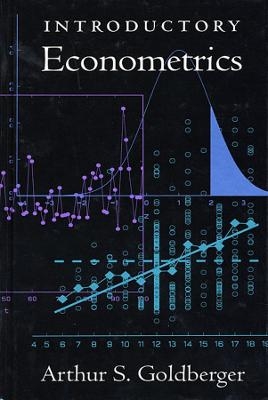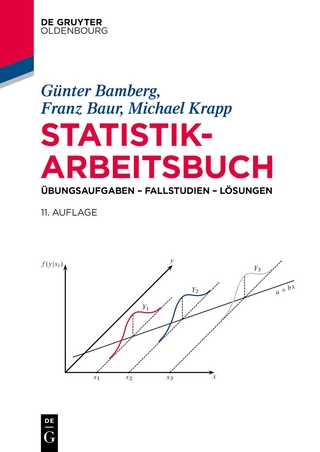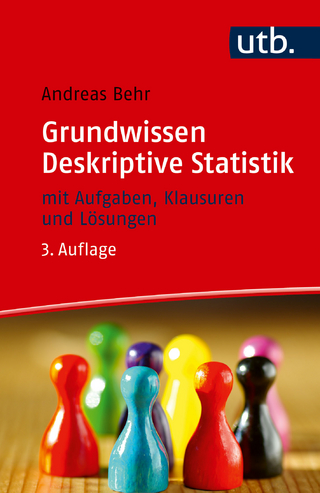
Introductory Econometrics
Harvard University Press (Verlag)
978-0-674-46107-9 (ISBN)
This is a textbook for the standard undergraduate econometrics course. Its only prerequisites are a semester course in statistics and one in differential calculus. Arthur Goldberger, an outstanding researcher and teacher of econometrics, views the subject as a tool of empirical inquiry rather than as a collection of arcane procedures. The central issue in such inquiry is how one variable is related to one or more others. Goldberger takes this to mean "How does the average value of one variable vary with one or more others?" and so takes the population conditional mean function as the target of empirical research.
The structure of the book is similar to that of Goldberger's graduate-level textbook, A Course in Econometrics, but the new book is richer in empirical material, makes no use of matrix algebra, and is primarily discursive in style. A great strength is that it is both intuitive and formal, with ideas and methods building on one another until the text presents fairly complicated ideas and proofs that are often avoided in undergraduate econometrics.
To help students master the tools of econometrics, Goldberger provides many theoretical and empirical exercises and real micro-and macroeconomic data sets. The data sets, available for download at www.hup.harvard.edu/features/golint/, deal with earnings and education, money demand, firm investment, stock prices, compensation and productivity, and the Phillips curve.
THE DATA SETS CAN BE FOUND HERE.
Arthur S. Goldberger was Professor of Economics, Emeritus, at the University of Wisconsin–Madison.
Preface 1. Empirical Relations Introduction Data Sets Other Resources Exercises 2. Fitting the Data The Data Least-Squares Fitting Useful Algebra Other Least-Squares Problem Exercises 3. Univariate Populations Probability Distributions Expected Values Linear Function Rules Prediction Problem Continuous Probability Distributions Normal Distributions Exercises 4. Bivariate Populations Bivariate Probability Distributions Derived Distributions Additional Linear Function Rules Prediction Other Features Exercises 5. Inference about a Population Mean Sampling Distributions Sample Mean Theorem Estimation Asymptotic Distributions Sample Variance Further Inference Practical Inference Exercises 6. Classical Regression Model Introduction Sampling Classical Regression Model Estimation Violations Exercises 7. Inference in the Classical Model Introduction Standard Errors Practical Inference Hypothesis Testing Functional Form Exercises 8. Prediction and Fit Prediction Coefficient of Determination Using R2 Prediction Revisited Exercises 9. Multiple Regression: Preliminaries Introduction Fitting the Data Interpretation Coefficient of Determination Trivariate Population Exercises 10. Multiple Regression: Classical Model Model Estimation Inference Short versus Long Regression Exercises 11. Multiple Regression: Applications Introduction Short versus Long Regression Zero-Slope Null Hypothesis Allocating R2 Relative Importance Both Slopes Zero Null Hypothesis Paradox? Exercises 12. Multiple Regression: General Case Fitting the Data Model Estimation Functional Form Hypothesis Testing Other Linear Hypotheses Exercises 13. Relaxing the Assumptions of the Classical Model Background Quadratic Regression Heteroskedasticity Autocorrelation Random Sampling Arbitrary Population Exercises 14. Heteroskedasticity Introduction Model Least Squares Weighted Least Squares Knowledge of Variances Practical Considerations Exercises 15. Autocorrelation: Preliminaries Introduction Model Least-Squares Regression Autocorrelated Data Sample Autoregressions Stochastic Processes Caution Exercises 16. Regression with Autocorrelation Introduction Special Cases Correcting Standard Errors Generalized Difference Method Practical Considerations Testing against Autocorrelation Caution Lagged Dependent Variable Exercises 17. Binary Response Models Binary Dependent Variable Probability Distributions Binary Response Model Logistic Model Probit Model Interpretation Goodness of Fit Exercises Appendix: Maximum-Likelihood Principle 18. Simultaneity: Preliminaries Simultaneous-Equation Models A Supply-Demand Model A Keynesian Model Estimation Interpretation Exercises 19. Models of Demand and Supply Introduction Structural Form Reduced Form Identification Identification Revisited Variants of the Model Order Condition Caution Exercises 20. Estimation of Simultaneous-Equation Models Introduction Indirect Least Squares Two-Stage Least Squares Caution Empire Example Rationale for Two-Stage Least Squares Exercises Appendix: Statistical Tables References Index
| Erscheint lt. Verlag | 7.1.2021 |
|---|---|
| Zusatzinfo | 34 line illustrations, 5 tables |
| Verlagsort | Cambridge, Mass |
| Sprache | englisch |
| Maße | 156 x 235 mm |
| Gewicht | 481 g |
| Themenwelt | Wirtschaft ► Volkswirtschaftslehre ► Ökonometrie |
| ISBN-10 | 0-674-46107-X / 067446107X |
| ISBN-13 | 978-0-674-46107-9 / 9780674461079 |
| Zustand | Neuware |
| Haben Sie eine Frage zum Produkt? |
aus dem Bereich


